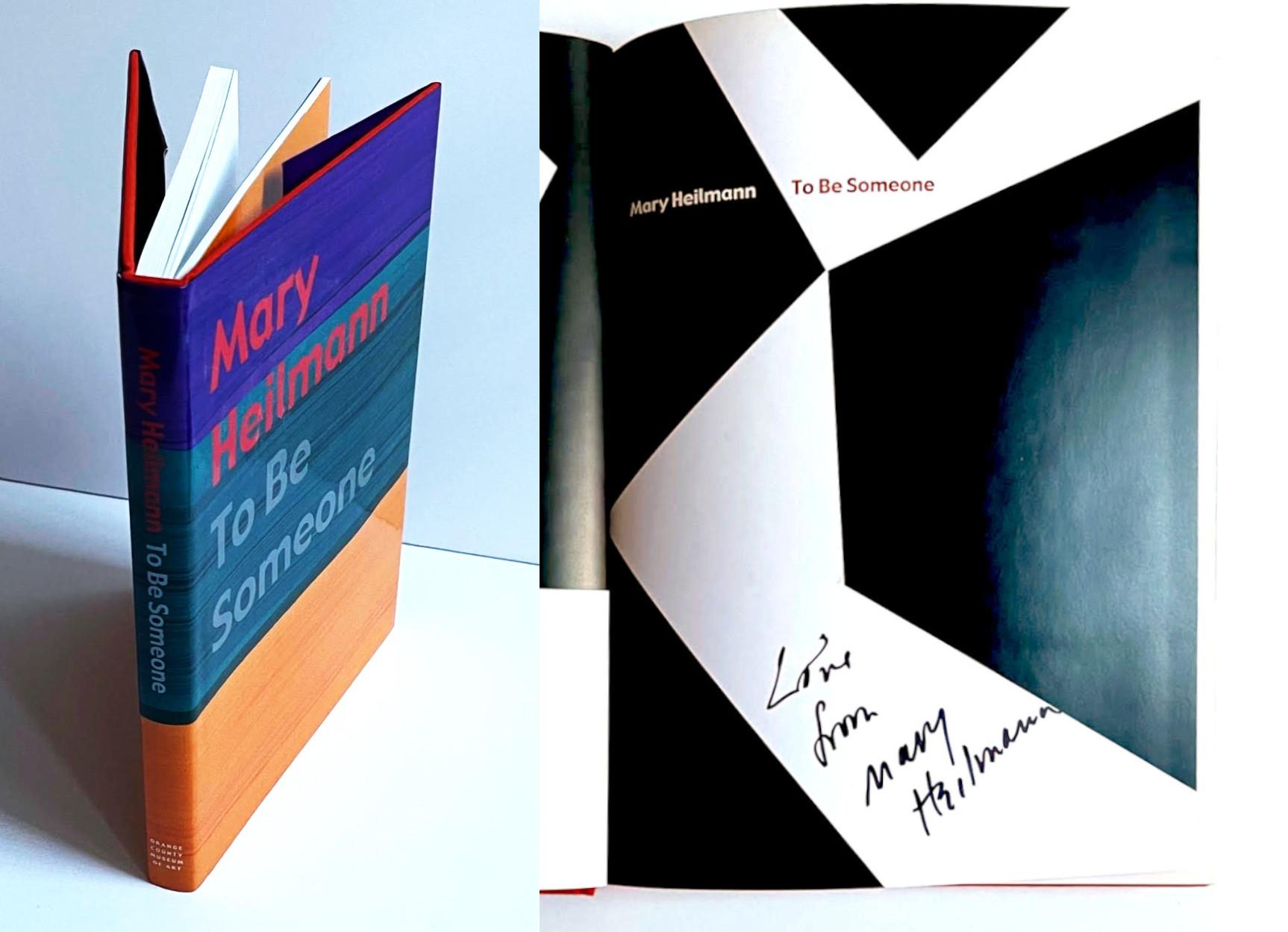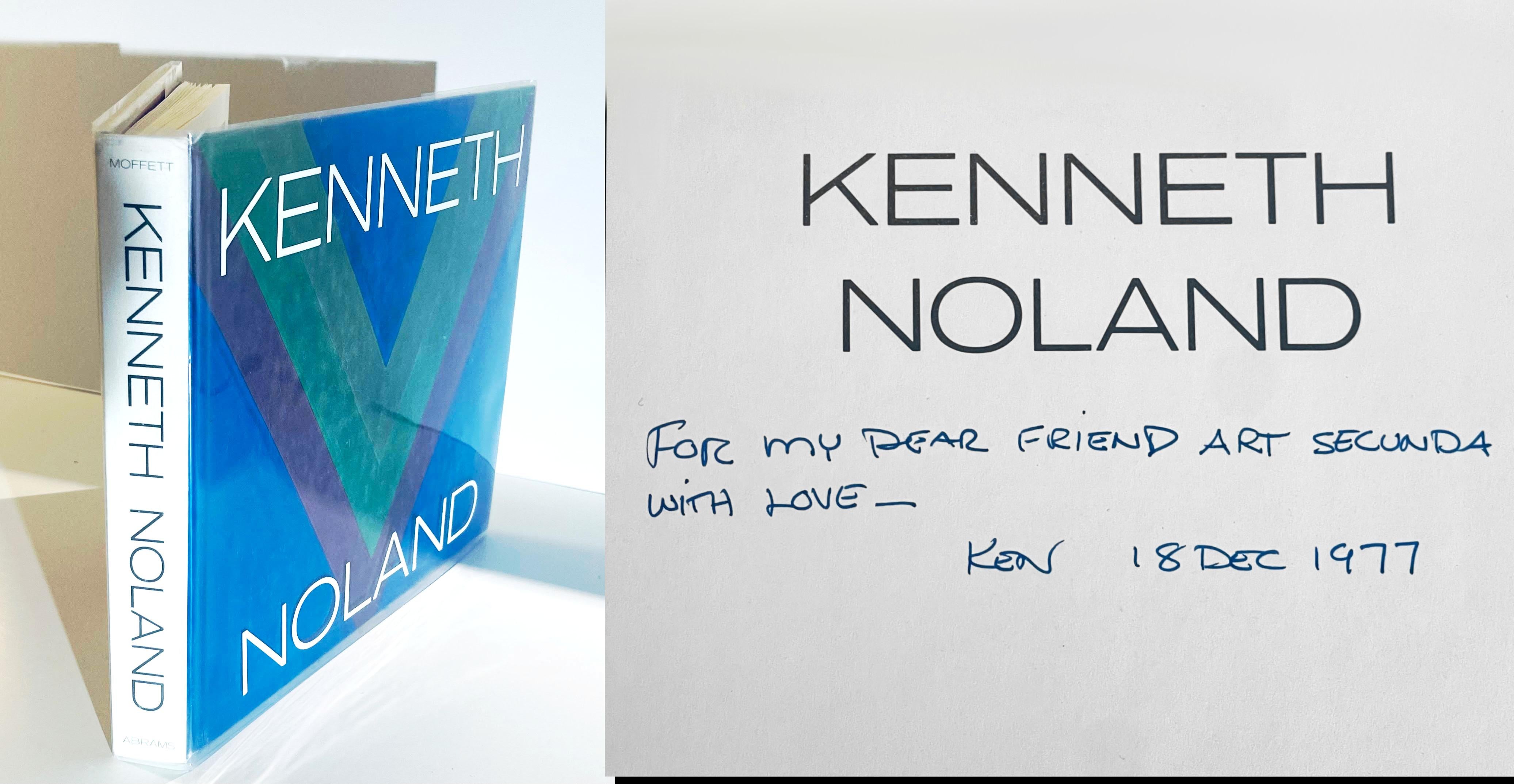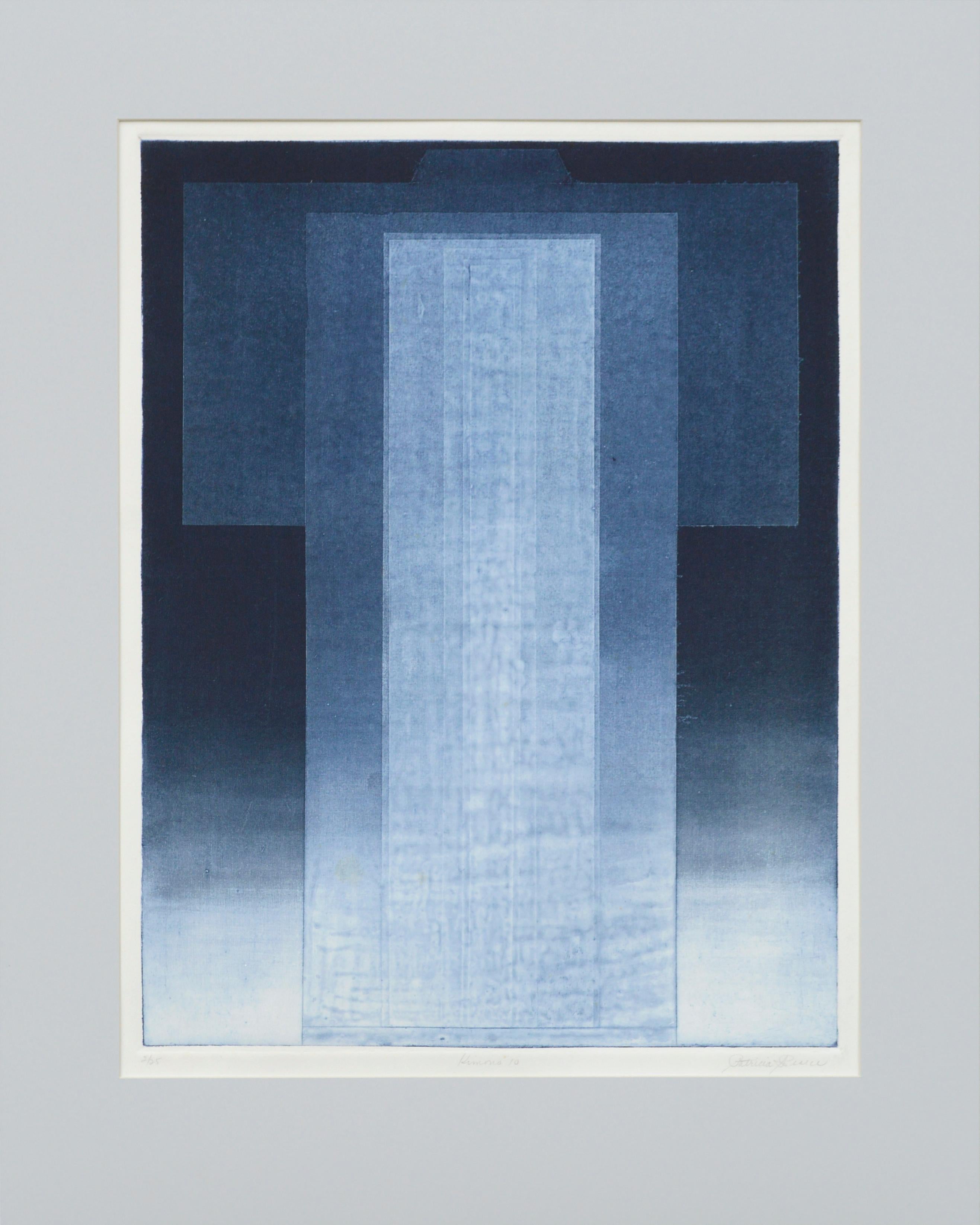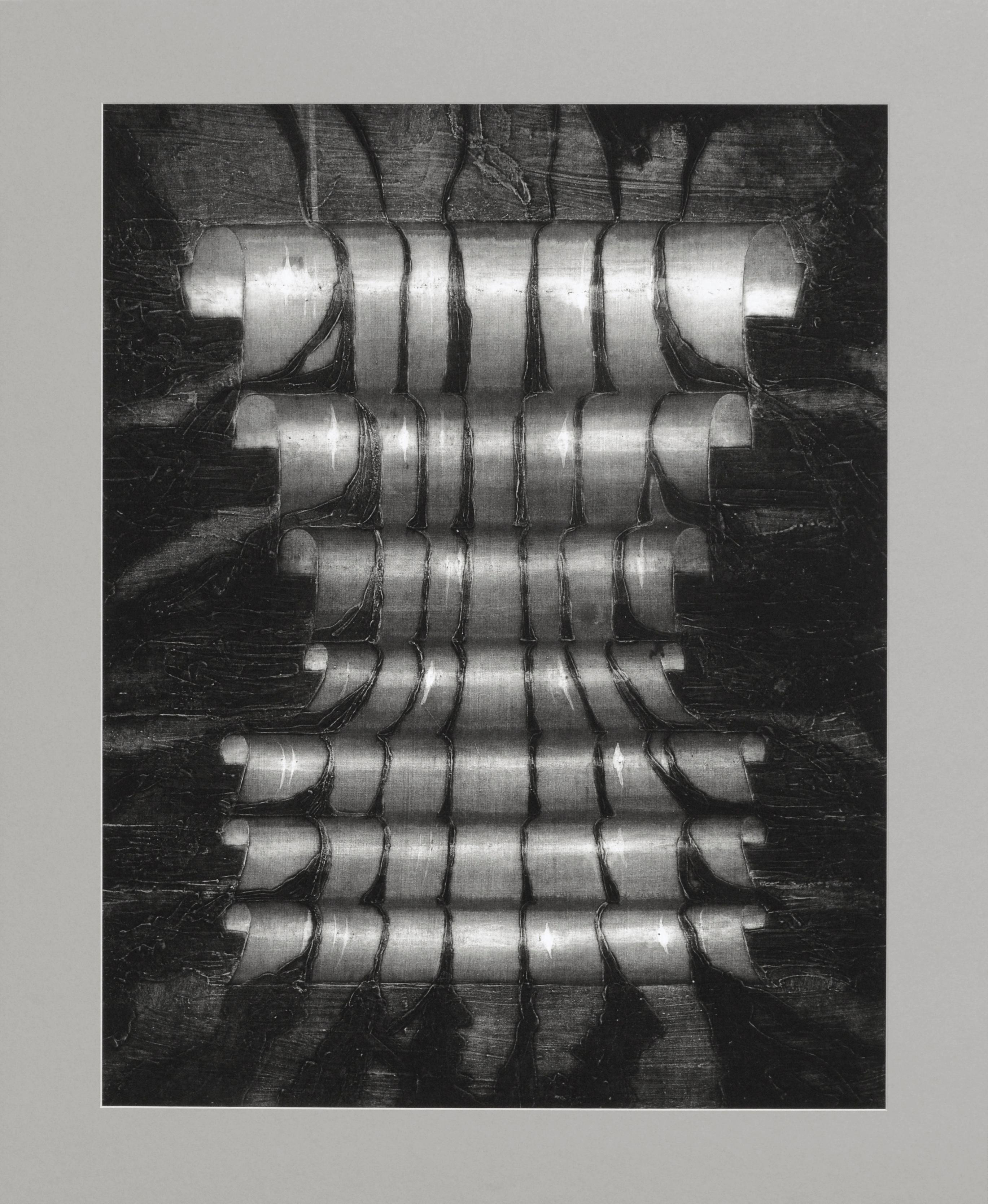Wassily KandinskyExhibition Poster for Kandinsky at Galerie Karl Flinker 1977 in Ink on Paperc. 1977
c. 1977
About the Item
- Creator:Wassily Kandinsky (1866 - 1944, Russian)
- Creation Year:c. 1977
- Dimensions:Height: 40 in (101.6 cm)Width: 28 in (71.12 cm)Depth: 0.25 in (6.35 mm)
- Medium:
- Movement & Style:
- Period:
- Condition:Posted was attached to a cardstock backing by a previous owner. Puncture holes in corners, as expected for an exhibition posted. Some mild surface artifacts from age.
- Gallery Location:Soquel, CA
- Reference Number:
Wassily Kandinsky
“Color is a means of exerting a direct influence upon the soul,” wrote the pioneering abstract artist Wassily Kandinsky. The Russian-born painter and theorist dedicated his life to using abstract compositions of form and color to express deep emotion as well as to depict the language of music through visuals.
Kandinsky was part of a crucial moment in art history — the early 20th century — that saw the rise of movements like Cubism. He embraced styles such as Surrealism and Fauvism and was a leading figure in bringing together Der Blaue Reiter (the name means “The Blue Rider” after one of Kandinsky’s paintings) in 1911, a group of avant-garde artists in Munich, including Paul Klee and Franz Marc, who explored spiritual concepts through their art as a response to the materialism of the time. Kandinsky also led courses on analytical drawing and color at the Bauhaus. He was appointed by founder and architect Walter Gropius to teach in Weimar in 1922. He taught at all three of the legendary school’s locations and remained with the institution until its forced closure by the Nazi party in Berlin.
The artist had the rare and unusual trait of synesthesia, the neurological ability to perceive things using multiple senses. In Kandinsky’s case, it was the gift of “seeing” music, and music appeared in every aspect of his work, including the titles of his series “Compositions,” “Improvisations” and “Impressions.” He once described the experience of painting using a musical metaphor: “I had little thought for houses and trees, drawing colored lines and blobs on the canvas with my palette knife, and making them sing just as powerfully as I knew how.”
While Kandinsky isn’t the first abstract artist — mystically inclined painter Hilma af Klint was making nonrepresentational art well before him — he certainly had the biggest impact on establishing the style. His paintings inspired the likes of Jackson Pollock, Willem de Kooning and other Abstract Expressionists. From his Untitled (First Abstract Watercolor) painted in 1910 to future works, his unique take on using color and flair for bold, experimental compositions, Kandinsky is one of the most important figures of early-20th-century art.
Find original Wassily Kandinsky art, including paintings and prints, on 1stDibs.
- ShippingRetrieving quote...Ships From: Soquel, CA
- Return PolicyA return for this item may be initiated within 14 days of delivery.
- "Blue Approach #2" - Hand-Augmented CollotypeBy Patricia A. PearceLocated in Soquel, CA"Blue Approach #2" - Hand-Augmented Collotype Delicate and layered collotype on both sides of heavy bond paper by Patricia A. Pearce (American, b. 1948). The background of this piec...Category
Late 20th Century Abstract Geometric Abstract Prints
MaterialsCopper
- Leaf - Lithograph (Artist's Proof)By Dennis John AshbaughLocated in Soquel, CADelicate lithograph with abstract leaf by Dennis john Ashbaugh (American, b. 1946). "Proof" is written in the lower left corner. Signed "D. Ashbaugh" in the lower right corner. Presented in a new grey mat with foamcore backing. No frame. Image size: 5"H x 4.75"W Dennis John Ashbaugh (American, b. 1946) was born in Red Oak, Iowa, and attended California State University at Fullerton, receiving his MA in 1969. Ashbaugh has spent most of his career in New York City. In 1992, he collaborated with William Gibson, fiction writer, and with publisher Kevin Begos on a book, Agrippa, meaning 'book of the dead'. Exhibition venues include the Metropolitan Museum of Art in New York City, the P.S.1 Contemporary Art Center, the Seattle Art Museum, and the Whitney Museum of American ArtPublic collections holding his work include the Hirshhorn Museum, the Museum of Fine Arts, Houston, the Los Angeles County Museum of Art, and the New York Metropolitan. He received a Guggenheim Fellowship. Ashbaugh lives in a trim frame house in Flamingo Park...Category
1970s Abstract Geometric Abstract Prints
MaterialsPaper, Ink, Lithograph
- "Kimono 10" Abstract Geometric LithographBy Patricia A. PearceLocated in Soquel, CABold lithograph by Patricia Pearce (American, b. 1948). Numbered ("2/25"), titled ("Kimono 10"), and signed ("Patricia Pearce") along the bottom edge. Presented in a blue-gray mat wi...Category
Late 20th Century Abstract Geometric Abstract Prints
MaterialsPaper, India Ink, Lithograph
- "Altered Illusions" CollagraphBy Patricia A. PearceLocated in Soquel, CAAbstract print by Patricia A. Pearce (American, b. 1948). This piece is unsigned, but was acquired with a collection of other Peace work. Presented in a new gray mat with foamcore ba...Category
1980s Abstract Geometric Abstract Prints
MaterialsPaper, Ink, Lithograph
- Gold Sky with Silver Ribbon - Hand-Augmented Modern Collotype PrintBy Patricia A. PearceLocated in Soquel, CAGold Sky with Silver Ribbon - Hand-Augmented Modern Collotype Print Delicate and layered collotype on heavy bond paper by Patricia A. Pearce (American, b. 1948). The background of...Category
Late 20th Century Abstract Geometric Abstract Prints
MaterialsSilver, Gold Leaf
- Teal Lace Collotype LithographBy Patricia A. PearceLocated in Soquel, CADelicate layered collotype on heavy bond paper by Patricia A. Pearce (American, b. 1948). This piece is unsigned, but was acquired with a collection of other Pearce work. No frame. I...Category
Late 20th Century Abstract Geometric Abstract Prints
MaterialsPaper, Ink, Lithograph
- Monograph: To Be Someone (Hand signed and inscribed "Love from Mary Heilmann")By Mary HeilmannLocated in New York, NYMary Heilmann To Be Someone (hand signed and inscribed "Love from Mary Heilmann"), 2007 Hardback monograph with dust jacket (hand signed and inscribed by Mary Heilmann) Warmly signed...Category
Early 2000s Abstract Geometric Abstract Prints
MaterialsPaper, Ink, Mixed Media, Lithograph, Offset
- Book: KENNETH NOLAND (hand signed and warmly inscribed to artist Arthur Secunda)By Kenneth NolandLocated in New York, NYKENNETH NOLAND (hand signed and warmly inscribed to artist Arthur Secunda), 1977 Hardback monograph (hand signed and warmly inscribed to renowned artist Art Secunda) Warmly signed, d...Category
1970s Abstract Geometric Abstract Prints
MaterialsPaper, Ink, Mixed Media, Lithograph, Offset
- Bridget Riley: Reconnaissance (hand signed and inscribed by Bridget Riley)By Bridget RileyLocated in New York, NYBridget Riley: Reconnaissance (hand signed and inscribed by Bridget Riley), 2001 Hardback monograph with no dust jacket as issued (hand signed and inscri...Category
Early 2000s Abstract Geometric Abstract Prints
MaterialsPaper, Ink, Mixed Media, Lithograph, Offset
- "Untitled 1970 C.P. #235" original lithograph abstract pop art signed mellowBy Garo Zareh AntreasianLocated in Milwaukee, WI"Untitled 1970 C.P. #235" is an original color lithograph with blended ink signed by the artist Garo Zareh Antreasian. It is editioned 10/60 in the center lower left margin with grap...Category
1970s Abstract Geometric Abstract Prints
MaterialsInk, Lithograph
- Venice IslesLocated in West Palm Beach, FLLithograph by artist Tony Khawam, high quality archival ink on bond paper 11”x14” bevel cut matte mounted on white matte board with options to choose between white or black frame 16x...Category
2010s Abstract Geometric Landscape Prints
MaterialsArchival Ink, Archival Paper
- Cooperative Kinetics #12, embossed serigraph monoprint, abstract, biomorphicBy George GoodridgeLocated in Jersey City, NJCooperative Kinetics #12, 2016, embossed serigraph monoprint on Rives 280 gram paper. Orange, green, black, gray and white. Non Objective, abstract, unique. Print size is 29.5" x 41.5"Category
2010s Abstract Geometric Abstract Prints
MaterialsInk, Rag Paper






